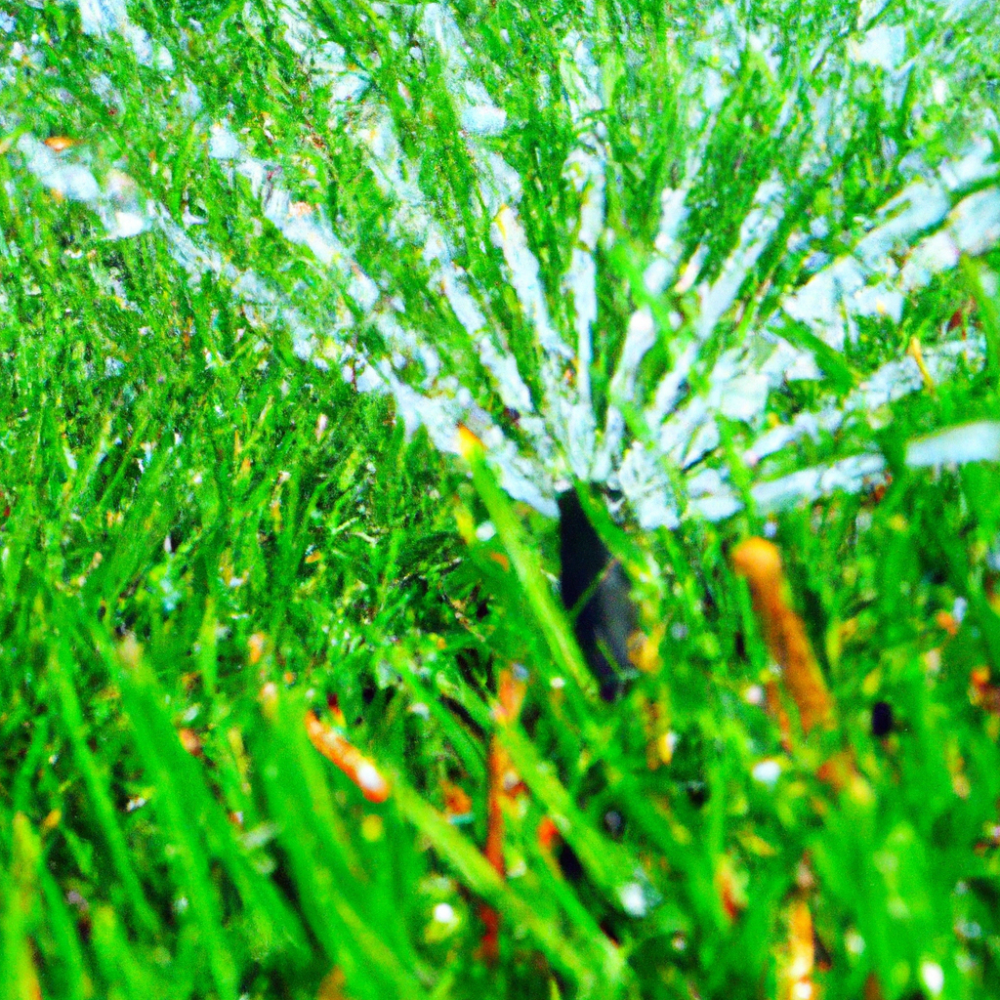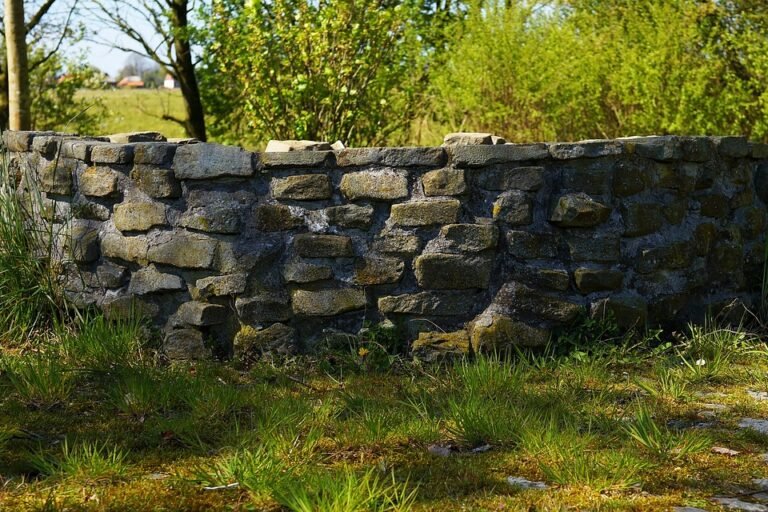As a proud homeowner, maintaining a healthy and beautiful lawn is undoubtedly a top priority. However, pests can often wreak havoc on our carefully manicured lawns, causing frustration and disappointment. But fear not, for there are telltale signs that can help you identify these pesky invaders. From the visible damage they leave behind to the tracks they trail, keep an eye out for these signs that may indicate the presence of lawn pests. But don’t worry, we’ll also discuss effective control methods that you can employ to reclaim your lush green sanctuary. So, let’s dive right in and uncover the secrets to identifying and controlling lawn pests!
Identifying Common Lawn Pests
When it comes to maintaining a lush and healthy lawn, identifying and controlling lawn pests is crucial. These pests can wreak havoc on your beautiful grass, causing discoloration, wilting, and even death. By knowing the signs and symptoms of pest infestation, you can take proactive measures to control them before they cause significant damage.
Symptoms of Pest Infestation
To identify lawn pests, it’s important to be aware of the symptoms they leave behind. One common symptom is yellow or brown patches in your lawn, which can indicate an infestation. Additionally, you may notice thinning or wilting grass, as well as chewed or eaten blades. Keep an eye out for holes or tunnels in the soil and grass, as they are often signs of burrowing pests. Pay attention to any unusual activity or behavior of wildlife in your yard, as they may be attracted to pests.
Visual Clues
Observing your lawn carefully can provide valuable visual clues about the presence of pests. Look for the presence of pests themselves, such as chinch bugs or armyworms, which can be seen crawling or dwelling on the grass. Some pests, like moles and voles, leave visible mounds or trails as they tunnel through the soil. You may also notice the presence of ants or ticks on your lawn, indicating an infestation.
Damage Patterns
Different lawn pests cause distinct damage patterns, which can help you identify the culprit. For example, chinch bugs often feed on grass blades, causing yellowing or browning patches in irregular patterns. Grubs, on the other hand, feed on the roots of the grass, leading to brown patches that can be easily pulled up like a carpet. Armyworms tend to eat grass leaves, leaving behind notches and chewed edges. Understanding these patterns can assist you in pinpointing the specific pest and devising an appropriate control method.
Inspecting the Lawn
Inspecting your lawn closely is an essential step in identifying lawn pests. Take the time to walk through your yard and examine the grass from different angles. Look for any signs of damage, pests, or unusual activity. Pay attention to areas with the most significant damage or where pests are most visible. Inspecting the lawn regularly allows you to catch infestations early, making it easier to control them before they become more extensive problems.
Understanding Different Lawn Pests
To effectively control lawn pests, it’s crucial to familiarize yourself with the various types of pests commonly found in lawns. Each pest has its specific characteristics and behavior, requiring different methods of control.
Chinch Bugs
Chinch bugs are small insects that extract sap from grass blades, leading to yellowing, wilting, and even death of the affected areas. These bugs are most active during hot and dry periods, often infesting lawns with dry or stressed grass. To control chinch bugs, regular watering and the use of insecticidal soap or insecticides specifically designed for chinch bug control can be effective.
Grubs
Grubs are the larvae of beetles, such as Japanese beetles or June beetles. They feed on grassroots, causing brown patches that can be pulled up easily. These pests are most active in late summer and early fall. Applying nematodes, microscopic worms that feed on grubs, is an effective natural control method. Alternatively, chemical pesticides formulated for grub control can be used, following the manufacturer’s instructions carefully.
Armyworms
Armyworms are caterpillars that can cause significant damage to lawns. They get their name from their behavior of marching across the grass in large numbers, consuming everything in their path. Armyworms tend to be active during warm and moist periods. To control armyworms, applying biological insecticides or using pesticides labeled for armyworm control can help eliminate these pests.
Sod Webworms
Sod webworms are small caterpillars that construct silk-lined tunnels near the soil’s surface. They feed on grass leaves, often causing thin or brown patches. Sod webworms are most active during the summer months. Encouraging natural predators like birds or applying insecticides specifically designed for sod webworm control can effectively manage these pests.
Moles and Voles
While not insects, moles and voles can still cause damage to lawns. Moles create elaborate tunnel systems that can uproot grass and create unsightly mounds. Voles, on the other hand, tend to gnaw on grass roots and bulbs. To control moles and voles, using traps or repellents can be effective. Additionally, removing their food sources, such as insects or grubs, can discourage their presence in the yard.
Ants
Ants can both be beneficial and harmful to lawns depending on the species. Some ants, like fire ants, can create unsightly mounds and deliver painful bites. To control ants, removing any food or water sources around the lawn can help deter them. Applying ant baits or using insecticides specifically labeled for ant control can also be effective if the infestation is severe.
Ticks and Fleas
Ticks and fleas are not only irritating to humans and pets, but they can also pose health risks. These pests thrive in tall grass or wooded areas, and they can easily infest your lawn. To control ticks and fleas, keeping your lawn mowed short and removing any tall grass or brush piles can help reduce their presence. Using insecticides labeled for tick and flea control can also be effective.
Mosquitoes
Mosquitoes are another pesky and potentially dangerous pest that can infest your lawn. They breed and thrive in stagnant water, so removing any standing water sources like birdbaths or clogged gutters is crucial. Using natural mosquito repellents or insecticides specifically formulated for mosquito control can help keep these pests at bay.
Mice and Rats
Mice and rats can cause damage to lawns by digging tunnels and searching for food. Their presence can attract other pests while also posing health risks. To control mice and rats, removing any potential food sources around the lawn, sealing off entry points, and using traps or poison baits can be effective. However, it’s crucial to handle these measures with care and consider the safety of other wildlife or pets in the area.
Natural Methods to Control Lawn Pests
If you prefer to use natural methods to control lawn pests, there are several strategies you can implement that are both effective and environmentally friendly.
Encourage Beneficial Insects
One natural way to control lawn pests is by attracting and encouraging beneficial insects. Ladybugs, lacewings, and praying mantises are examples of insects that feed on pests like aphids or caterpillars. Planting flowers and herbs, such as daisies, marigolds, or lavender, can attract these beneficial insects to your lawn.
Use Nematodes
Nematodes are microscopic worms that feed on pest larvae, such as grubs or armyworms. They are harmless to humans, pets, and beneficial insects but can significantly reduce pest populations. Nematodes can be purchased and applied to the lawn according to the package instructions.
Implement Companion Planting
Companion planting involves strategically planting certain plants near each other to deter pests. For example, planting garlic or chives near your lawn can help repel pests like aphids or ticks. Research companion planting combinations specific to the pests you want to control and experiment with different plant arrangements in your garden.
Apply Organic Pest Control Solutions
Organic pest control solutions, such as insecticidal soaps or horticultural oils, can be effective in controlling pests while minimizing harm to the environment. These products are made from natural ingredients and are safe to use around children, pets, and beneficial insects. Be sure to follow the instructions provided on the product labels for optimal results.
Chemical Control of Lawn Pests
In some cases, chemical control methods may be necessary to combat severe pest infestations. However, it’s essential to approach chemical control with caution and follow necessary safety precautions.
Understanding Pesticides
Pesticides are chemical or biological substances designed to kill or control pests. They come in different forms, including sprays, granules, or powders. It’s important to read and understand the label instructions before using any pesticide, paying attention to dosage, application methods, and safety precautions.
Choosing the Right Pesticide
When selecting a pesticide, it’s crucial to choose the one that targets the specific pest you want to control. Different pests require different active ingredients and application methods for effective control. Research the best pesticide options for your specific pest and consult with a professional if you are uncertain.
Following Safety Precautions
When using chemical pesticides, it’s vital to prioritize safety. Wear appropriate protective gear, such as gloves, goggles, and a mask, to avoid direct contact with the pesticide. Keep children, pets, and wildlife away from treated areas until the pesticide has thoroughly dried or as instructed on the label. Always store and dispose of pesticides according to the manufacturer’s instructions to prevent environmental contamination.
Preventive Measures for Lawn Pest Control
Taking preventive measures can greatly reduce the likelihood of future pest infestations in your lawn.
Maintaining Proper Lawn Care
A well-maintained lawn is less susceptible to pest infestation. Regularly fertilizing your lawn, ensuring proper irrigation, and addressing soil nutrient imbalances can help promote healthy grass that is more resistant to pests.
Regularly Mowing and Watering
Proper mowing and watering practices can discourage pests and promote a healthy lawn. Keep your grass at the recommended height for your specific turfgrass type, as cutting it too short can weaken the grass and make it more vulnerable to pests. Additionally, water your lawn deeply but infrequently, allowing the soil to dry out between watering to discourage pests that thrive in damp conditions.
Turfgrass Selection
Choosing the right turfgrass species for your lawn can make it more resilient to pests. Research the varieties that are most suitable for your region and consider factors such as heat tolerance, disease resistance, and pest resistance.
Promoting a Healthy Soil
A healthy soil ecosystem is key to preventing pest infestations. Regularly aerating the soil, adding organic matter, and maintaining a balanced pH level can contribute to a healthy soil environment that is less attractive to pests.
Keeping the Yard Clean
Regularly cleaning up fallen leaves, grass clippings, and debris from your yard can help prevent pests from finding shelter and breeding grounds. Keep your outdoor areas tidy and remove any potential food sources for pests to discourage their presence.
By identifying common lawn pests, understanding their behavior, and implementing effective control measures, you can keep your lawn healthy and pest-free. Whether you choose natural or chemical methods, always prioritize safety and consider the long-term impact on the environment. With proper care and diligence, you can enjoy a vibrant and pest-free lawn that is the envy of the neighborhood.



